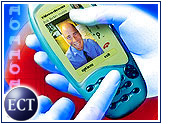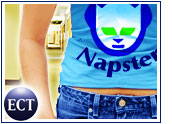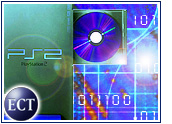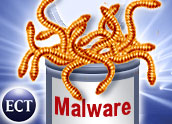
The legal and social debate over the legitimacy of peer-to-peer (P2P) applications has made headlines since the days of Napster and Hotline — and continues to be a major issue today. While there are certainly other hotspots in the tech industry, the P2P debate serves as a focal point for some of the most important issues of the day, such as security, personal privacy and copyright law.
On one side of this debate are applications like LimeWire, Morpheus, Bearshare and Kazaa, whose makers say their products have many uses and that they promote the legitimate ones and are not responsible for any illegitimate activities. On the other side are entertainment companies that see those products as taking revenue from music labels and artists. The two sides have waged an ongoing war in the courtroom, which continues unabated and in which consumers now find themselves as participants.
One can argue about the legality of such applications, but there is no debating their popularity. Sharman Networks’ Kazaa P2P application has been downloaded more than 315 million times, making it — according to Download.com — the most-downloaded software in the world. Clearly, demand for these applications is still strong, despite the Recording Industry Association of America’s push to squelch P2P file-sharing activities.
TechNewsWorld turned to Phil Morle, CTO of Sharman Networks, for an exclusive interview to talk about the future of file sharing and the latest developments in the world of P2P.
TechNewsWorld: Please tell us a little about Sharman Networks and what your role is there.
Phil Morle: Peer-to-peer software is an evolutionary development and not a revolutionary one. It is a very natural direction for technology to take. Every day, more people move more files, and these files get larger. Simultaneously, the same people own increasingly powerful computers that are underutilized.
Network resources are like any other resource that is needed by society, but if the Net were our water supply, our reservoirs would be depleted more quickly than we could build them while the entire population would have enormous, unused tanks of water in their backyards that stagnated. Sharman was formed to connect these water tanks to ensure that no one goes thirsty and the cost of water remains low.
Our main priority has been on solutions for media distribution. This area has seen explosive growth in file sizes and the demand for files. As media companies put their digital catalogues online, they are going to need the resource capacity to meet the demand. By using peer-to-peer for both streamed media and direct downloads, online distributors can save about 90 percent of the cost of traditional methods — and in many cases can offer more robust, faster delivery through the intelligence of the peer-to-peer network.
We have been proving the model for the past two years, demonstrating that bands can make it big, movies can be released and game publishers can do excellent business over P2P. My role as CTO is to collaborate with our international technology group and the other areas of our business to develop Kazaa technology to meet Sharman’s vision for P2P.
TNW: What would you say the biggest technical challenges are right now in the world of file sharing?
Morle: The benefits of distributed peer-to-peer networks create unique challenges that are not present in centralized environments. Users of the Kazaa application itself — and not Sharman Networks — manage the files on the P2P network, and our challenge is to give them the tools to manage it effectively. The network can only be created, organized and made safe by the users.
For example, Kazaa is the only file-sharing application with integrated antivirus technology. Using P2P technology, we push the latest virus definitions to users at an incredible rate. Users effectively give the definitions to each other. Automatically, they protect each other from viruses and clean the experience for other users at the same time.
We are making good progress on the security challenges. We are also looking at collaborative filtering techniques to empower users to manage the files that are available so that they are collectively responsible for removing bad files and categorizing and labeling good files effectively.
An example here is the metadata in digital photographs. There are billions of photos out there waiting to be shared by their creators, but they are lacking detailed metadata. We are looking at ways to facilitate fun and easy management of metadata by all users. The more complete the metadata, the better the search experience.
TNW: What about the most exciting technologies right now?
Morle: I am most excited about magnet links at the moment. Read more about these at






















































Why not ask him what he thinks of Morpheus implementing FastTrack? What steps will be taken to prevent this (or even work with them?) What will future versions of Kazaa Media Desktop have? Will Sharman revamp the FastTrack Network anytime soon? How about support for other operating systems?